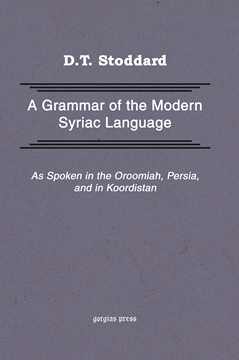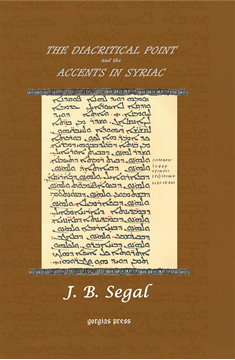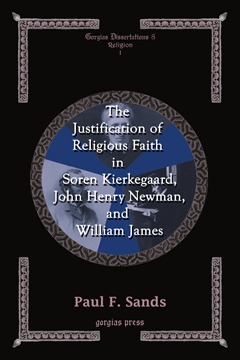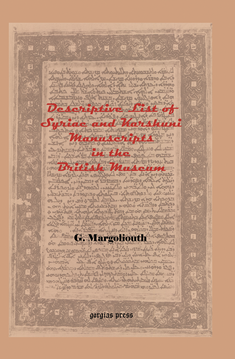Gnostic Ethics and Mandaean Origins
ISBN: 1-931956-85-5
In opposition to other leading scholars of the Mandaeans, Yamauchi concludes that the Mandaeans could not have originated before the second century CE. He notes their distinguishing characterisitcs from other Gnostic groups.
$85.00 (USD)
The History of the Saracens (Arabs)
Comprising the lives of Mohammed and His Successors, to the death of Abdalmelik, the eleventh Caliph
By S. Ockley
ISBN: 1-59333-151-7
Upon its first publication, this work was received by scholars with marked approbation as the most complete and authentic account of the Arabian Prophet and his successors which had yet been given to the world. It continues to be regarded as the standard history of this eventful period.
$99.00 (USD)
Eastern Christians, The Last Arameans
ISBN: 1-59333-077-4
The first and only extensive treatment of the genocide of the Aramaic-speaking Christians of the Middle East, in particular the Syriac Orthodox communities, in the late 1800s and early 1900s under the Ottomans. Courtois bases his study on the diplomatic archives of the French Foreign Affairs office (Quai d'Orsay), the archives of the Dominican Mission at Mosul, Iraq, written eyewitness accounts, and oral interviews with genocide survivors conducted by the author.
$184.00 (USD)
The Laughable Stories Collected by Mar Gregory John Bar-Hebraeus
ISBN: 1-59333-123-1
The first complete edition, containing 727 "laughable stories", by Bar-Hebraeus. It was the child of the compiler's old age, and says much for the broadmindedness and versatility of the learned Bar-Hebraeus.
$89.00 (USD)
Grammar of Modern Syriac Language as Spoken in Urmia, Persia, and Kurdistan
Series: Kiraz Historical Grammars Archive 7
ISBN: 1-59333-124-X
A detailed grammar, with extensive vocabulary, of the Neo-Aramaic dialect as spoken in Urmia, by a missionary of the American Board in Persia.
$132.00 (USD)
The Diacritical Point and the Accents in Syriac
By J. B. Segal
ISBN: 1-59333-125-8
The only detailed study of the diacritical and vocalization system of Syriac. Segal examines the history and usage of the diacritical point, from before the seventh century, up to the thirteenth century, taking into account both the East and West Syriac traditions.
$132.00 (USD)
The Justification of Religious Faith in Soren Kierkegaard, John Henry Newman, and William James
By Paul Sands
Series: Gorgias Studies in Religion 8
ISBN: 1-59333-126-6
This book examines the religious epistemologies of Søren Kierkegaard, John Henry Newman, and William James in the light of contemporary challenges to religious faith. They defended the right of persons to embrace religious beliefs that are not strictly warranted by empirical evidence and logical argumentation. Faith must not be hampered, they argued, by the demands of reason narrowly conceived. Paul Sands notes, however, important differences in the way each relates faith to reason. Sands examines the religious epistemologies of Kierkegaard, Newman, and James in the context of two "givens" characteristic of early twenty-first century culture, namely, the intellectual hegemony of probabilism and the pluralization of the Western mind.
$123.00 (USD)
Historical Anecdotes in the Tannaitic Midrashim
Historical Anecdotes in the Tannaitic Midrashim
Series: Gorgias Studies in Judaism 9
ISBN: 1-59333-127-4
This study applies form criticism to the stories of the earliest rabbinic midrashim. The results shed light on the literary personalities of the individual midrash collections and the relationships of transmission in the tradition. These stories are of particular interest from an inter-religious and comparative literary point of view because New Testament studies have often referred to certain narratives in the gospels as "midrashic." The author sets forth, in positive terms, an understanding of what functions historical anecdotes serve in the tannaitic midrashim, along with a catalogue of the rhetorical conventions used to fulfill those functions.
$144.00 (USD)
The Nestorians or The Lost Tribe
With a New Introduction by H.L. Murre-van den Berg
By Asahel Grant
ISBN: 1-59333-154-1
Grant gives an account of his interactions with the "Nestorians", arguing that they “are indeed the representatives and lineal descendants of the Ten Tribes.” His vivid descriptions of their lives and traditions are a valuable resource on the "Nestorian" Christians in the early 1800s.
$106.00 (USD)
Descriptive List of Syriac and Karshuni Manuscripts in the British Museum
ISBN: 1-59333-155-X
This is a catalogue of Syriac and Karshuni manuscripts purchased by the British Museum by W. Budge in 1889 and 1890 at Mosul, Alkosh, and the Tiari district. This is the sequal to Wright's Catalogue of the Syriac manuscripts in the British Meuseum, also available from Gorgias Press.
$58.00 (USD)









